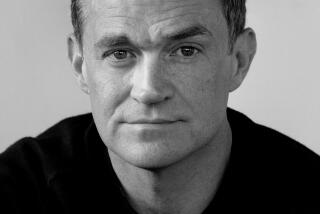LATEST OF THE KIENZLE CAPERS
- Share via
William Xavier Kienzle is a former priest who, as the insatiable collectors of detection know, has created the busiest crime-solving priest since Gilbert K. Chesterton’s Father Brown. Kienzle’s Father Robert Koesler has by now been embroiled in nine mysteries, commencing with “The Rosary Murders” in 1979.
The latest of the Koesler capers, “Deadline for a Critic,” was published in April (Andrews, McMeel & Parker). It will be a source of satisfaction to some readers because Kienzle briskly polishes off a critic, one of the nastiest in memory. The Clifton Webb character in “Laura,” typing away in the bathtub and bubbling over with venom, is a pussycat compared to Ridley Groendal.
Kienzle has a lot of fun inventing Groendal’s critical snarlings. I suspect that he also confirms some widely shared fantasies by investing Groendal with the power to destroy lives and careers not only through his writings but through his backstage maneuverings as well.
But, curiously enough, the attraction of “Deadline for a Critic” is actually not so much Groendal as it is the history he shares with his victims (victims not of murder but of character assassination). He is so unredeemed a villain that it is remarkable Kienzle has given him such psychological credibility.
What gives the novel its real seizure has been induced by threatening letters from four of those he has secretly persecuted.
The critic’s funeral (conducted, of course, by his lifelong friend Father Koesler) becomes the framework for the book, spacing the flashbacks to childhood, high school and seminary where priest, critic and victims first knew each other. Kienzle teasingly indicates that the priest has already solved the murder as the ceremony begins, and has told the police which of the mourners to take away after the service.
There is indeed a small but satisfying surprise waiting at the end, an obeisance to the mystery form. But the flashbacks are all. Groendal, who from his earliest days has been a perpetrator, has over the years managed a kind of emotional somersault, reinventing himself not as perpetrator but as victim and vowing sly revenge on those he now imagines have done him harm. He is the Iago of the arts pages.
He is also gay. And this makes for some uncomfortable moments, even though Kienzle is at pains to dissociate the gayness and the villainy. He carefully establishes that Groendal was well into adulthood and into his resentments before he paused long enough to consider what his sexual identity was. Thereafter he has a long, constant and loving relationship, on which the plot turns.
It is also evident that Kienzle, through his compassionate priest-hero, finds Groendal for all his villainies a tragic figure. “Be at peace,” Koesler murmurs at graveside.
Still it makes for uneasiness, in part because Kienzle is pushing at the parameters of the crime genre, mixing naturalism and a fairly extravagant make-believe. The screen has had its share of implicit or explicit gay villains, including the epicene figure Webb played in “Laura,” as a matter of fact. Film’s flamboyance itself has a kind of mollifying effect.
It is just that the gay life is girt with so much real anxiety and pain. Even Kienzle’s underlying sympathy and understanding cannot change the fact that the author is dealing with material which doesn’t mix well in what is still essentially escapist fare.
More to Read
Sign up for our Book Club newsletter
Get the latest news, events and more from the Los Angeles Times Book Club, and help us get L.A. reading and talking.
You may occasionally receive promotional content from the Los Angeles Times.









